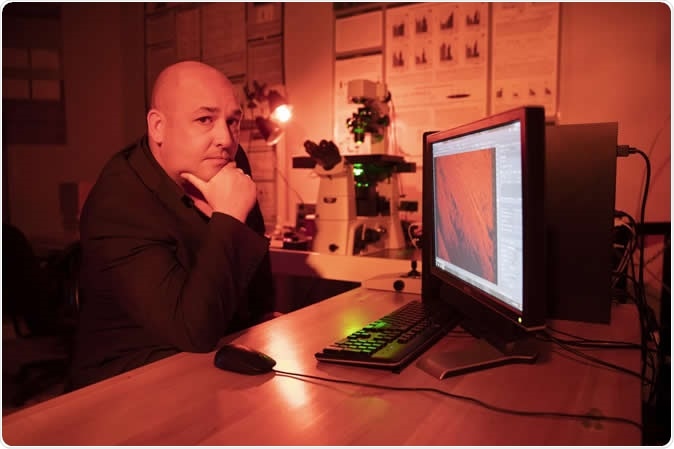The sunscreen industry has been plugging the use of various sun-protective creams for decades, ever since researchers found that certain skin cancers, including malignant melanoma, were due to sunlight-induced skin damage. The earlier stages of damage, including solar keratosis and in acute cases, sunburn, have also been well described. Yet, nobody quite knew how this damage was linked to sun exposure.
Now a new study says ultraviolet radiation in sunlight explodes the connections holding skin cells together, destroying the mechanical integrity of the skin.
Until now, scientists including researchers with the cosmetics industry have been debating which type of ultraviolet radiation is worst for the skin, and adding different types of chemicals to their formulations to absorb more of the ultraviolet rays.
What is ultraviolet radiation?
Ultraviolet rays, as the name denotes, are rays that occur beyond the far end of the violet rays that mark the upper limit of the solar spectrum. Sunlight, as everyone knows, can be split into seven distinct colors (VIBGYOR) marked by increasing energy from the red to the violet end. Ultraviolet is even more energetic than violet rays, and cannot be seen with the human eye. These rays are classified into four types, again based on the energy of the light particles or photons of which they are composed.
The stratum corneum (SC) is the most superficial layer of the human skin, and often dismissed as being composed of dead skin cells. However, it forms a single watertight membrane of marvelous strength and uniformity, while allowing the body to act as a tactile organ which responds to touch at all levels of intensity. This is accomplished mainly by the tight junctions that occur between adjacent skin cells at multiple points to keep every skin cell closely and firmly attached to its neighbors at all points. These tight junctions or desmosomes are composed partly of a protein called desmoglein-1 (Dsg 1).
Older studies show how different types of UV penetrate the surface layer of the skin to varying depths, causing the tissue to become more fragile, and promoting the earlier onset of skin wrinkles. These changes are collectively referred to as photodamage, and the associated cancer risk has been well established. And it’s not just about cancer either – the skin is the primary barrier against infections and a whole range of toxins to which we are exposed every day.
However, while much research has gone into identifying which part of sunlight is carcinogenic, the mechanism of skin damage has been less studied.
How was the study done?
Researchers at the University of Binghamton used several samples of female breast skin, which is not typically exposed to much sunlight. They then used different types of UV light to irradiate the skin, at increasing intensities. The radiation used included UVA, UVB and UVC, at wavelengths of 365 nm, 302 nm and 265 nm respectively. The longer the wavelength, the lower is the associated energy of the radiation. Thus the most energetic radiation among these is UVC.

Binghamton University Assistant Professor of Biomedical Engineering Guy K. German oversaw the study. Image Credit: Binghamton University, State University of New York
The scientists progressively increased the intensity of the incident ultraviolet light from each category to up to 4,000 J/ per square centimeter of skin. They then looked specifically at the SC to identify the resulting damage. They measured the mechanical strength of the SC following various levels of irradiation, using classical parameters, namely, the elastic modulus, the fracture stress, the fracture strain and the work of fracture.
The greatest damage at any one level of intensity was caused by UVC irradiation. However, the researchers carried out further analysis to account for reflected and transmitted light for each of these categories. What they then discovered is that all types of UV radiation are equally harmful. Rather than the specific type, it is the amount of UV energy absorbed by the SC that is directly related to the ease with which the skin fractures. In other words, the more sunlight the skin absorbs, the greater the skin breakdown.
Researchers discover how the sun damages our skin
The researchers then examined the SC to find out the reasons for the structural damage it had suffered. They found that in proportion to UV absorption again, the Dsg 1 protein migrated away from the sites of the tight junctions between cells, causing the desmosomes that anchor the cell-cell connections to fail. They combined both the laws to formulate a near inverse scaling law, based on which they created an accurate predictive model of the mechanical breakdown of tissue in proportion to the absorbed UV radiation. This could help determine how best to protect the human skin from such damage when exposed to sunlight.
The researchers stress that based on their study, it is important to protect the skin from UV radiation at any season of the year, because the cumulative absorption of UV is more important than any single episode. They are now working on how UV affects deeper skin layers. The scientists emphasize, “Use sunscreen not just for preventing skin cancer, but also to keep the integrity of your skin so you don't get infections or other problems.”
The study, "Ultraviolet light degrades the mechanical and structural properties of human stratum corneum," was published in the Journal of the Mechanical Behavior of Biomedical Materials.
Journal reference:
Ultraviolet light degrades the mechanical and structural properties of human stratum corneum. Zachary W.LipskyGuy K.German. Journal of the Mechanical Behavior of Biomedical Materials, Volume 100, December 2019, 103391. https://doi.org/10.1016/j.jmbbm.2019.103391. https://www.sciencedirect.com/science/article/pii/S1751616119305892